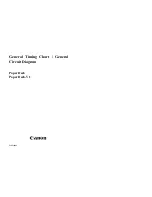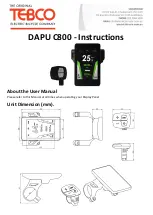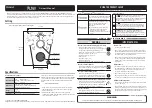
U S E R G U I D E
|
U V C S S I D E CU R E C O N V E Y O R
15
Troubleshooting
CAUTION!
Only qualified maintenance personnel should attempt the following procedures.
Table 1.
Troubleshooting Chart for Dymax Lamp Assemblies
Problem
Possible Cause
Testing
Corrective Action
Lamp Will Not
Ignite
15B
or
16B
Lamp
Flickers,
Won’t
Maintain
Operation
Improperly fastened
Connections
Visually inspect all connections
to and from the Power Supply.
Secure all connections.
Main Line Fuse blown
Remove Fuse from Power
Receptacle and check with an
Ohmmeter.
Replace Fuse if defective.
Corroded Lamp Bases
Visually inspect the Lamp Bases
for any signs of corrosion.
Replace the Lamp Bases if corrosion
exists (both Lamp bases should be
replaced at the same time).
Bulb beyond useful life
Replace Bulb with new Bulb and
re-test unit.
Replace Bulb if defective (typical life
= 2,000 hours).
Power Supply Board
Failed
Check UV output voltage on
power supply board. Set
Oscilloscope to: 20ms/div
100V/div
Replace Power Supply Board if
defective.
Igniter Malfunctioned
Verify open circuit voltage from
igniter. Set Oscilloscope to:
50us/div 1000V/div
Replace if defective.
Unit Blows
Input Fuse
Malfunction in the Power
Supply Board
Remove power. Disconnect the
Lamp/Reflector Housing
Assembly from the Power
Supply. Replace the Fuse.
Apply power. If the Fuse blows,
the Power Supply is defective.
Replace the Power Supply Board.
UV Intensity
Appears to
Be Low
Bulb beyond its useful
life
Use a Radiometer to measure
actual output intensity. Consult
Radiometer Manual for proper
output.
Replace Bulb if defective
(typical life = 2,000 hours).
Quartz Envelope on
Lamp contaminated
Visually inspect the lamp for
signs of contamination (Quartz
envelope MUST be free from
ANY contamination).
Clean the Lamp with a soft, lint-free
cloth and isopropyl alcohol. Lamp
may have to be replaced if
contamination is burned into quartz
envelope.
Surfaces of Reflector
May be contaminated
Examine Reflector Surface for
contaminants (should be a
clean, shiny surface).
Clean Reflector with a soft, lint-free
cloth and isopropyl alcohol or
equivalent.
Reflector temperature is
too low
Verify Reflector temperature is
between 115°F and 145°F as
measured at the Temperature
Indicator on top of the Reflector
Housing.
Add or remove Reflector Ventilation
Plates as necessary to achieve
proper temperatures.






































